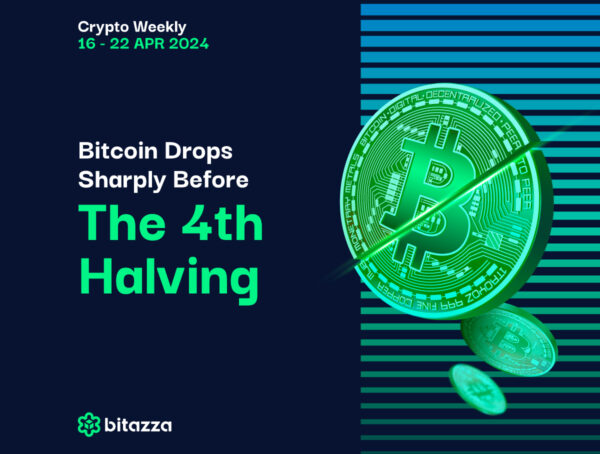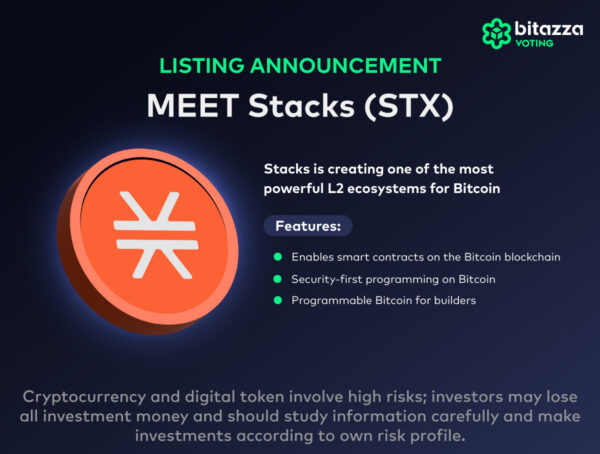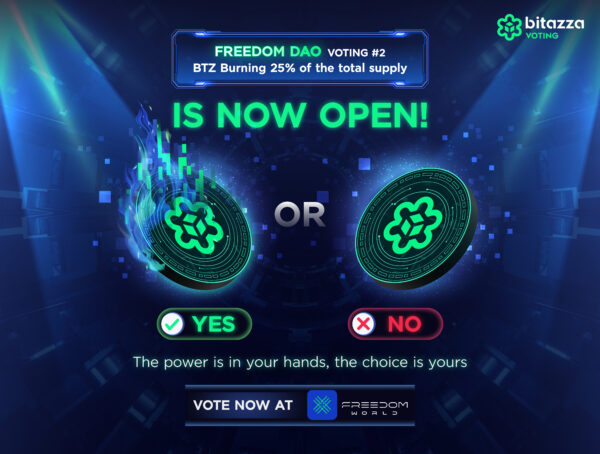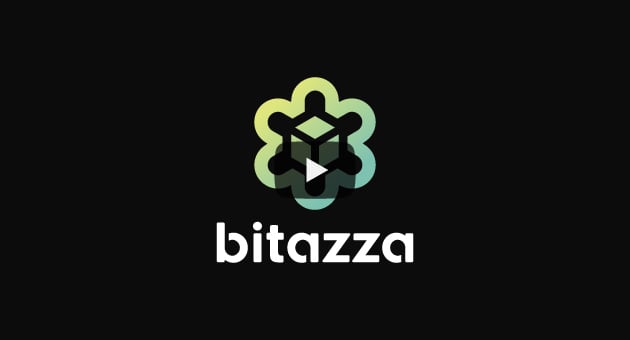
The Summary of Special Live AMA: Fuse
Art – Kavin Phongpandecha, Bitazza’s CEO and co-founder and Didi Wiboonma, Bitazza’s CCMO hosted a Live AMA session with Mark Smargon, Co-Founder and CEO of Fuse, our ecosystem partner in delivering true Web3 utility using blockchain technology with products such as our Web3 wallet, making their first-ever appearance on a Thai channel right here at Bitazza Thailand.
Watch the full Special Live AMA: Fuse episode here
Get to know Fuse
Founded 3.5 years ago, and based in Tel Aviv, Israel, Mark has been in blockchain and crypto fulltime since 2013. Fuse is building an alternative to Visa, at least that’s how they see the technology in the future. Currently there’s some technical confusion with the average consumer such as the distinction between token and network. Foundational technology may one day replace physical cash. Fuse is building a network like Visa that will work anywhere in the world.
Having been in the space for so long, what does Mark think is the most important thing for blockchain to be incorporated into daily life? To him, what is mass adoption?
Lots of trends that are converging. Sometimes speculative bubbles form, but some trends are here to stay i.e. open source code. When it comes to money, things have been stagnant for a while, but they are beginning to change. All the rules for fiat currency seem to be governed by the crises at the moment. The underlying technology in the space is not speculative. Things move in cycles when at times there will be people talking about it but not doing any of the work, and there will be times when people will be doing it but not talking about it. Much like Microsoft embracing linux, he sees financial institutions adopting a if you can’t beat them, join them approach.
Why do you think it’s important for Fuse to use this technology for payment?
For the last 20 years, Mark has been working with businesses and sees a lot of parallels between his experiences and what is currently happening in the Web3/crypto sector. Back in the day, when somebody wanted to build a store they had to build a website from scratch. Things are moving slower than Mark has thought, with the bulk of value transfers happening in an inefficient manner. Things are moving slower because the risk here is higher compared to something like disrupting food delivery. This technology is a direct challenge to regulators and securities laws, and the central banks around the world. It also creates competition with consumers now wanting to be able to do more with their money. Since Bitcoin’s genesis, we can see a lot of parallels that can be drawn between crypto now, and how the internet initially evolved.
Considering recent events that have led to increased scrutiny towards the crypto sector, how do you view the recent events and what’s ahead of us, both in terms of projects that are compliant with regulations as well as with decentralized projects.
From his personal perspective, this is not the first time he has seen a decline/breakdown; however for some reason, this time Mark feels more confident than before. Comparatively the 2018 crash was horrible with no stablecoins, and no DeFi usage. In 2018, we had many people just sell and leave because there was nothing else they could do with their crypto compared to the current market with increased options for use. One thing that hasn’t changed is the number of developers, which only seems to go up when the market starts booming again. From a strategic perspective, a bear market is much better for pushing project developments and is a good environment for trial and error. In bear markets, you get to develop without extra noise and hype that can skew your results.
What is your strategy of attracting developers?
They see the world outside of Ethereum as their focus; not really trying to capture ETH’s market share. To them, a blockchain is a means to an end. There is no point in building a blockchain for its own sake. They look at their blockchain as a way to store money that works globally. One of their focuses is to not have custody at all. Change is fueled by consumer demand. Their ability to build today is much higher compared to Visa back in the 60’s. Also, it means they don’t have to charge partnering businesses high cost. This provides a viable alternative to Visa and something that is more appropriate for the 21st century.
Blockcahin’s real problem isn’t that it’s not comfortable for consumers, it’s that it’s not comfortable to developers. They don’t need to know how to build the infrastructure necessarily, Fuse’s target developers should be on boarded for things like Wix, Stripe, Shopify, etc.
.
Open source financial services are the future. It’s a long term investment. Open source in the financial sector is rare with most institutions choosing to look for something not outsourced. Mark believes this will be more and more popular. All existing solutions are not really global and are not very cheap. Poor countries and people end up paying the most. The new generation is likely going to have an entirely different approach to finance compared to older generations.
In your own words, how do you see these businesses bridging over from the old world to the new world? What are some of the drivers that would convince them to change? Where do you see the two worlds meeting and what are some proposals you can envision?
Biggest employer is the SMB sector globally. They are the long tail of the domestic financial system. For them, it is currently very low tech with none of the advantages of a big global corporation. I brought up an example of Starbucks, and how they can do vertical integration in a way that other competitions wouldn’t be able to. There is a high barrier of entry just to build mobile apps alone. They want to level the playing feel and democratize the system so that SMB’s can compete with huge conglomerates and have digital presence on par with much bigger competitors.
Can we go into more depth over what the Fuse ecosystem consists of?
Strategy was network first. Started with a L1 blockchain. Not trying to replace ETH by any means. They don’t believe that the future is going to have blockchain that rules everything. There are roughly 30 million people that seem to be capable of using Web3 on Ethereum. These are mostly tech-savvy investors and are not really Fuse’s target audience. They are building a vertical specific ecosystem that focus on B2B, P2P, and social payments, etc. The model created by Visa in the 60’s cannot handle the demands of consumers today. The main difference between ETH and FUSE is that it is focused specifically on businesses, and allowing businesses to enter the Web3 world in a friendly way.
Anything new that can be shared?
Freedom Wallet! Initially we just wanted a wallet for Mystic Valley. Fast forward a few years, it has developed into an entirely new vision. They will also be launching Fuse 2.0 soon, but they cannot share too much before the official unveiling in the beginning of February. Their objective is to change the narrative. Nobody really questions BTC’s legitimacy anymore. Now the next conversation is how do we use this technology for business and retail adoption. Only big companies like Nike, Adidas and FB have shown the resources to adopt crypto.
Any updates in terms of market focus? What would be the ideal target user for the Fuse chain?
The businesses that pay fees in the network are operators: merchants or groups of merchants, startups, events, etc. Payment is the main pain point that is missing in crypto. We need to provide services for business that may not necessarily care about the technical details. It has become clear that for real business adoption of crypto, they don’t really care about the technology. We need real world payment integrations to drive use cases.
Fuse Charge question
Charge is the cloud service with APIs, Webhooks, etc that allow businesses to build what they need without having to create the underlying infrastructure.
How will Web3 provide utility in everyday life, what are some of the key highlights of Fuse when compared to existing competition in the industry
Web2 wasn’t a piece of technology, it was a collection of changes that happened together in parallel. Web3 will be about blockchain, business models, blockchain agnosticism, identity, etc. From the consumer perspective, it is likely they won’t necessarily feel anything beyond getting better service delivered across all verticals. They are not seeing competitors that are building a blockchain for business adoption. Their advantage is they are not religious about crypto.
How is Fuse positioned when authorities start putting regulations in place?
Mark thinks CBDCs are overhyped, much like private blockchains in 2017. CBDCs are a hedge against BTC by the Chinese government. Because of how risk-adverse and non-tech fluent banks are, it seems unlikely that the banks will do much in terms of active development. Regulations are written in blood, regulations that stick are usually a byproduct of reacting to a crisis.
.
Regulations are inevitable, Mark is right about how regulations emerge in a response to crises. Being in the space for a bit, regulators have good intentions and want to leave space for innovation. From a global perspective, Thailand has plenty of room to grow with good mobile penetration, somewhat friendly regulators, etc. The Thai Central Bank has shown interest in developing a CBDC for inter company and cross border payments but it remains uncertain if that is going to have much of an impact on the crypto world, considering what the banks are developing are a closed intranet style system. The world needs a digital equivalent to cash, especially so that we can test whether new models will work. The hope is that CBDCs and crypto can meet in the middle
There is irony in how one of the main use cases for decentralization is stablecoins that are pegged to fiat currency, predominantly USD. With CBDCs we are essentially issuing the same thing, but directly from the government. How do you see the difference and how there may be conflict between stablecoins and central banks.
Mark hypothesizes that banks are not going to be able to respond to consumers adequately. Central banks need to see real world macroeconomic data to make policies, so having things be digital would give the central banks more tools to make informed decisions. CBDCs are not here to replace anything, just as a supplement to existing tools. CBDCs are mostly targeting RTGS systems.
Following all the challenges, what are some key points that you would like to highlight in terms of the Fuse project that would create credibility for your ecosystem, particularly wallet products and payment solutions.
The only way to trust something is to learn and give it time. There is nothing he can say that can build instant trust. All code is open source so users can do their own due diligence. They are believers that it is about building momentum, not making a lot of money early.
Closing question
From a builder’s perspective, the bear market is an opportunity to prove and see what actually works. He has been having a lot of fun in the last 6 months.
You might also like
More from Tutorial
Selecting the Ideal Copy Trade Leader for Optimal Risk
What type of Copy Trade leader can we choose to follow? Even though those who become leaders in Copy Trading …
2 Rules to Pass The Vote
🔥Will Freedom DAO Voting #2: BTZ Burning 25% of the total supply pass? Only you can control your own destiny! Let’s …
Freedom DAO Voting #2: BTZ Burning 25% of the total supply is NOW OPEN!
Freedom DAO Voting #2: BTZ Burning 25% of the total supply is NOW OPEN! 🔥Will BTZ be burned or not? Let’s …


























